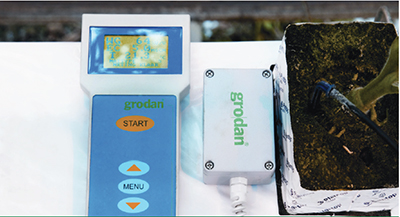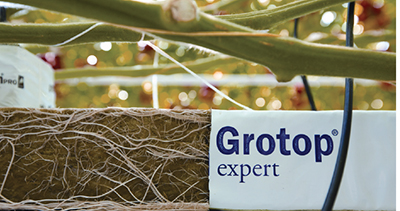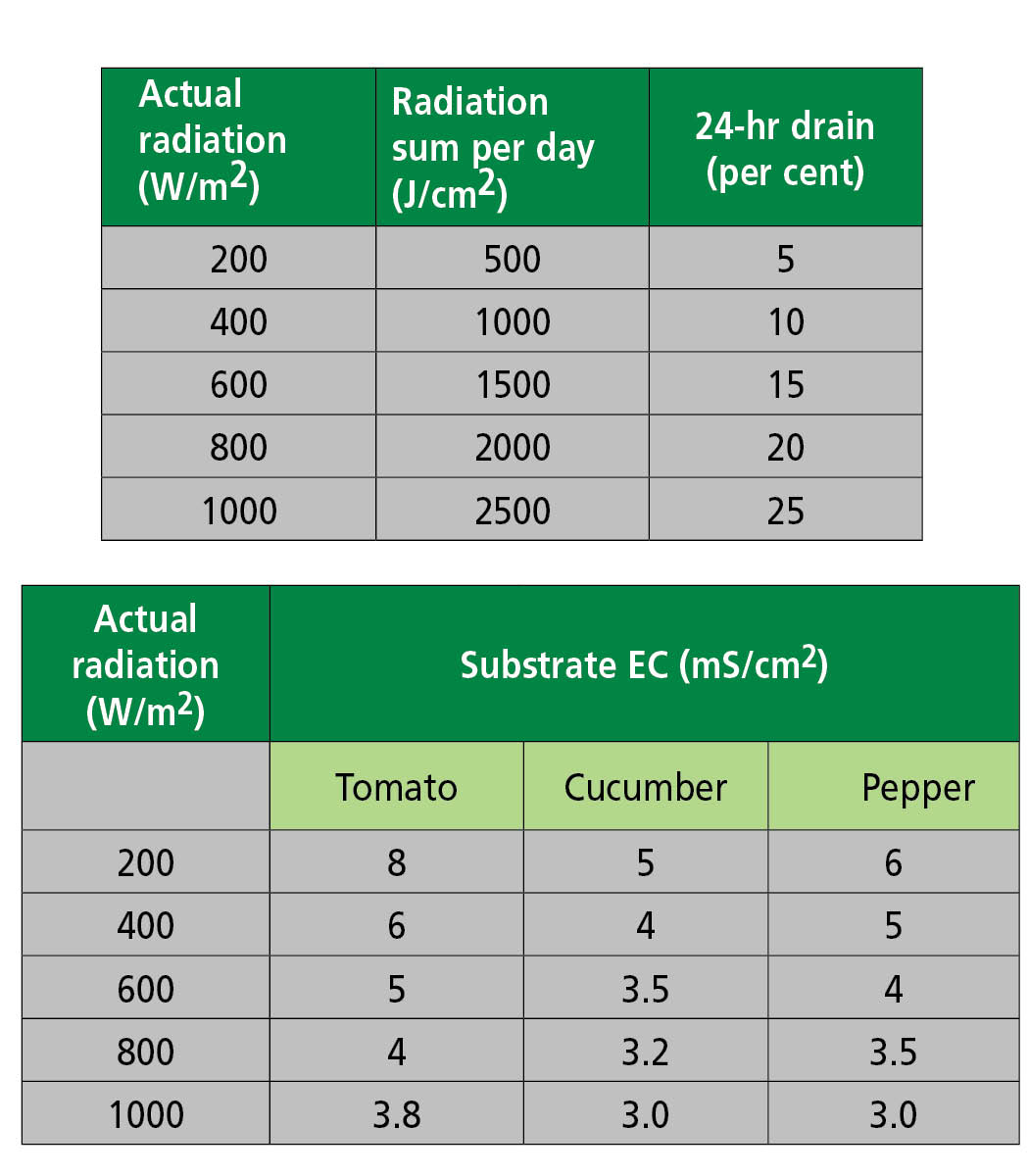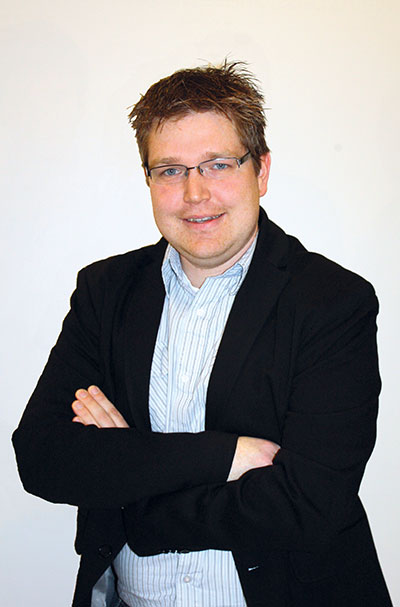
As we move deeper into fall, the light levels will decrease rapidly, which poses many issues for plant and fruit quality, parameters which must be maintained in order to maximize production.
Whether your crop is nearing the end of its cultivation cycle or will grow through the winter, the irrigation strategy is an important steering tool at this time of year.
For plant quality we need to protect root quality. If we over-irrigate, we run the risk of losing root quality and increase the chances of crop losses from fungal diseases, such as Botrytis and Mycosphaerella.
 |
|
| Photo 1: A water content meter by Grodan.
|
Moreover, we run the risk of compromising fruit quality in tomato crops by increasing the susceptibility towards micro-cracking or splitting.
Within the irrigation strategy, the general rule of thumb still applies – “transpiration then irrigation.” EC management is still important but we can accept higher ECs in the substrate, especially on darker days. Water content meters, such as the Grodan water content meter, can help you judge when to start and how frequently to apply irrigation during the day. It will also provide information as to EC development. (See Photo 1)
TIPS FOR MANAGING SUBSTRATE WC
Before the first irrigation, look for a 1.5 – 2.0 per cent decrease in substrate WC from sunrise. This will ensure the crop is sufficiently active before we apply the first irrigation. This will avoid moments of root pressure.
 |
|
| Photo 2: Good root health.
|
Target a sufficient decrease in WC overnight by optimizing the stop time either on radiation sum (J/cm2) and / or light intensity (W/m2). By creating enough decrease in the WC overnight, we bring air/oxygen into the substrate, which is needed for good root health. The optimal ranges are: cucumber and pepper 8 – 10 per cent, and tomato 12 –15 per cent. (See Photo 2)
At the end of the day, look for a four per cent drop in WC within the first three hours after the last irrigation. This will prevent unwanted moments of root pressure and ensure enough drop in WC overnight.
As light and overall radiation levels will become lower compared to summer conditions, it is too easy to over-irrigate. This is normally seen in high drain amounts. Table 1 presents the suggested drain volume for radiation level.
TIPS FOR MANAGING SUBSTRATE EC
It is important to maintain some drain with the lower amounts of irrigation. Most critical for successful EC control is to achieve the first drain ±two hours after the first cycle, within three to four cycles. In this way, EC will be at its lowest level when radiation is at its highest point and water uptake is most needed.
 |
|
| Monitor the rootzone regularly.
|
Start times will become later as plant activity starts later in the day, so it is important to use larger irrigation cycles. By using a larger irrigation cycle (four to six per cent of your substrate volume/m2), it is still possible to realize the first drain in time, as described previously.
During the fall and winter period, we should accept higher EC levels for plant balance (over-wintered crops) and fruit quality for those crops nearing the end of the cultivation. EC levels will be higher and water uptake will be lower, ensuring the required amount of nutrients into the plant. Higher EC levels will also help maintain sufficient fruit quality. For suggested EC levels in relation to light levels see Table 2.
 |
Table 2: Indicative substrate EC values (measured at midday) in relation to highest daily light intensity (w/m2)
For more information please speak to your local Grodan representative or contact the company at info@grodan.com.
 |
|
Rens Muusers earned a master’s degree in Plant Science with a specialization in greenhouse horticulture from Wageningen University in the Netherlands. As an expert in artificial lighting for tomato production, he was an integral part of trialing substrates for vegetable production. In 2011, he relocated to Canada as a technical advisor for North America with Grodan.
Print this page